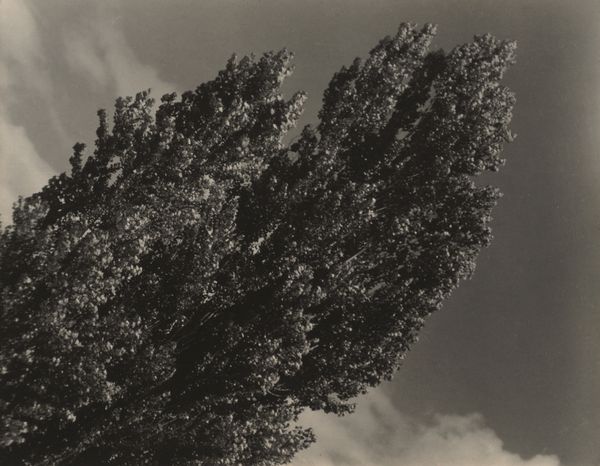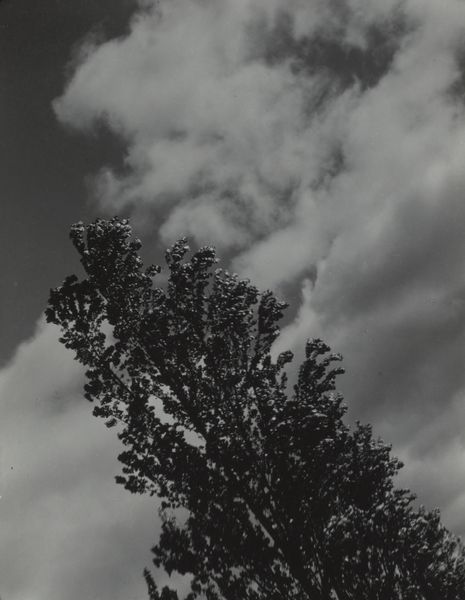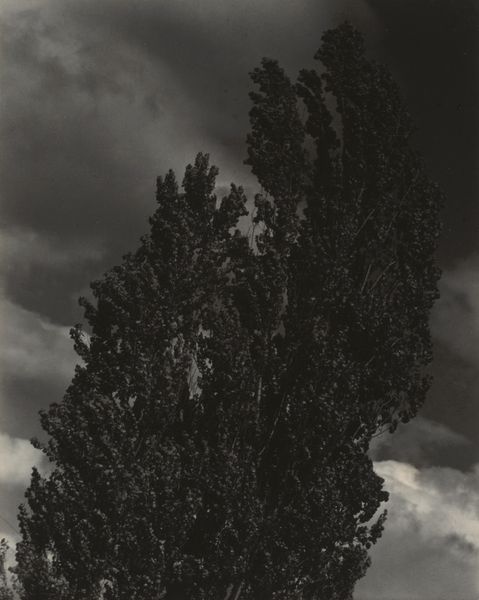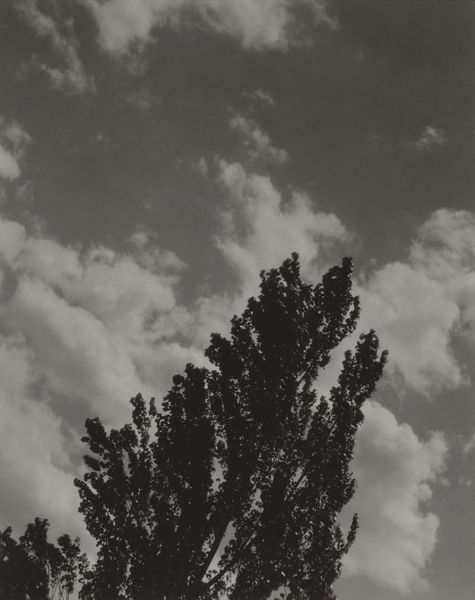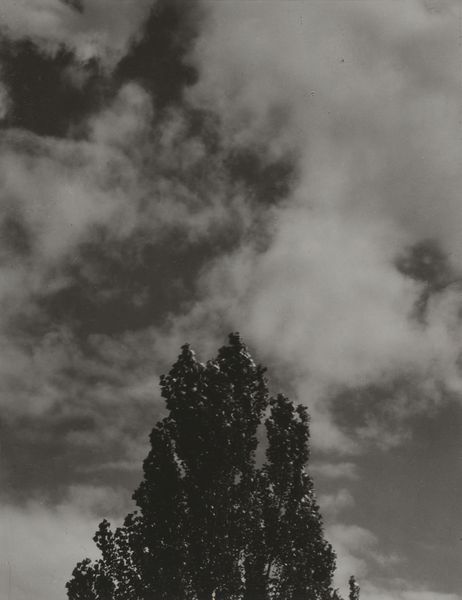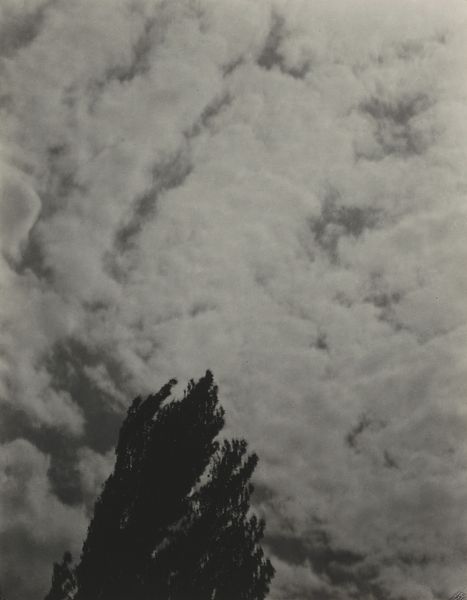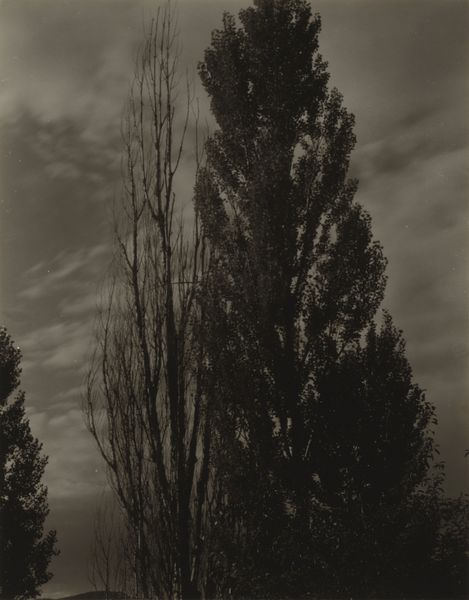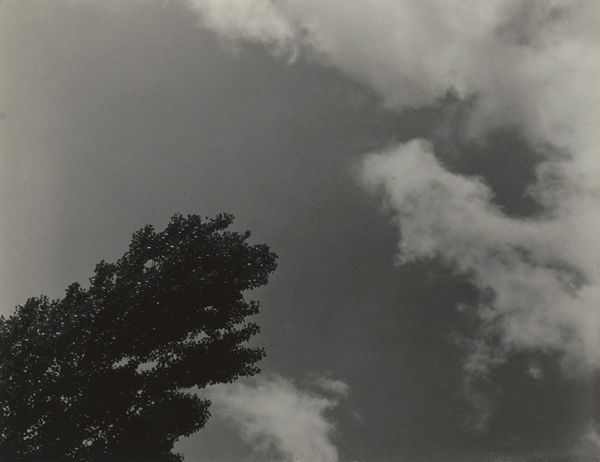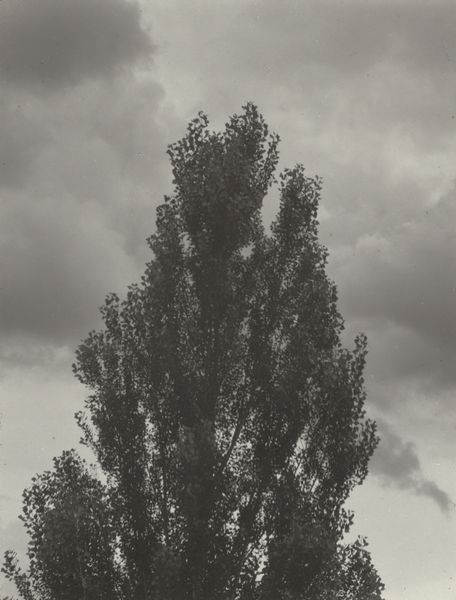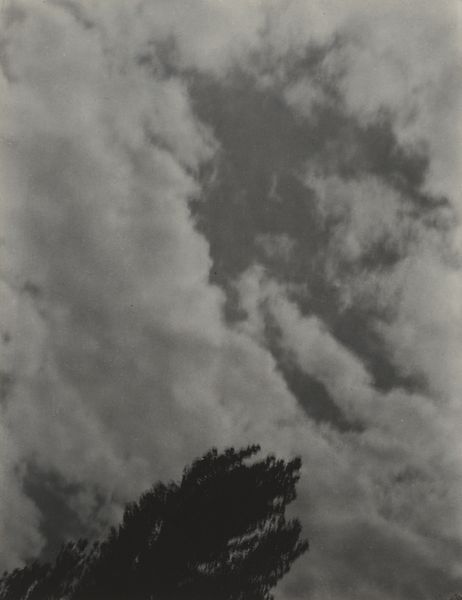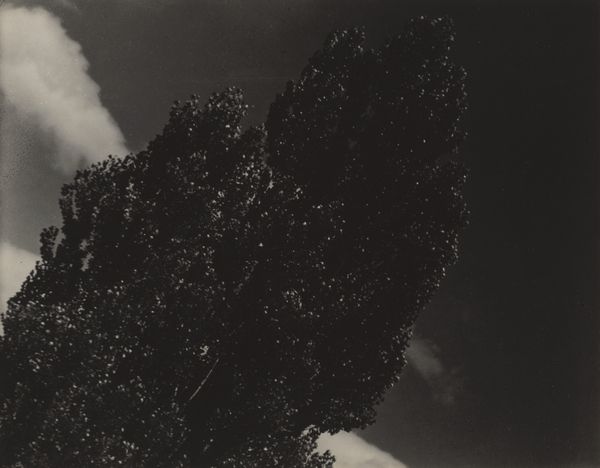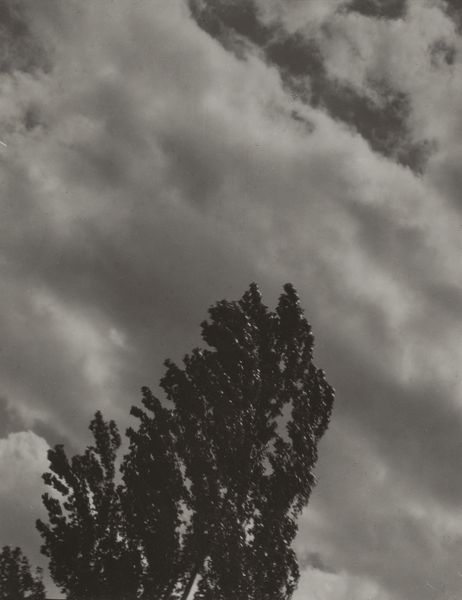
photography, gelatin-silver-print
#
pictorialism
#
landscape
#
photography
#
gelatin-silver-print
#
monochrome photography
#
monochrome
#
modernism
#
monochrome
Dimensions: image: 11.5 x 8.8 cm (4 1/2 x 3 7/16 in.) sheet: 12.7 x 10.1 cm (5 x 4 in.) mount: 34.3 x 27.6 cm (13 1/2 x 10 7/8 in.)
Copyright: National Gallery of Art: CC0 1.0
Curator: Alfred Stieglitz's 1923 photograph, "Portrait—K.N.R., No. 3 or Songs of the Sky C3," immediately strikes me as a study in contrasts, even beyond the obvious monochrome presentation. The dynamic range between dark foliage and radiant clouds evokes a unique emotional tone. Editor: It's interesting you focus on "emotional tone." To me, its power rests in its production, its gelatine-silver print offering us direct access to Stieglitz's method. This print, itself an object, manifests an interaction between photochemicals and light. That's where I see its charge. Curator: I understand what you mean about materiality—however, I think there's more than just physical presence at play. Consider how the contrasting tones and shapes in this landscape interact; this formal opposition is what evokes dynamism and sublimity, don’t you agree? Editor: I do. Stieglitz wasn't merely depicting "nature." His choices - gelatin silver, and a small-sized print—are about a new vision for photography as an artistic material that could stand apart from painting while embracing the mass reproduction made possible during the machine age. Curator: Well, the title itself—"Songs of the Sky"—lends itself to broader metaphorical reading. It suggests transcendence or spiritual reflection. And if you follow that thread, you understand Stieglitz was positioning himself within philosophical discourse. Editor: That transcendence has a basis. Photography provided a democratic medium and shifted visual culture. These images of the sky, reproducible for all, speak to labor in that they reflect not just his individual hand but also industrial processes: factories churning out chemicals, mass communications opening up this type of image-making. Curator: Ultimately, whether viewed through a formal or a material lens, this photograph provokes contemplation on nature's relationship to modern consciousness. Editor: Right. It allows for reflection upon both the artistry of rendering nature and the mechanics required to capture its image, to make it material and accessible to an audience.
Comments
No comments
Be the first to comment and join the conversation on the ultimate creative platform.
